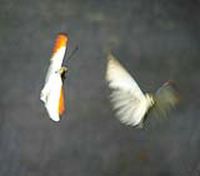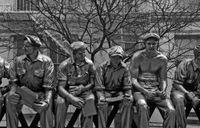Amy Jo Kim
linked to a couple interesting pieces on market research and talking to customers.
In The perils of market research on Corante, there's some thinking about fake conversations in focus groups, poorly specified research briefs ("Scratch many research briefs and you'll find a conversation that needs to happen inside the business. An elephant under the table that's not being talked about."), and the power of the face-to-face equal conversation over coffee: "When we go out and actually talk with customers, cutting out the middleman, we expose ourselves to more than just an exchange of information. We allow ourselves to be changed, to be moved, perplexed, provoked, saddened, cheered and to experience a real connection."
Access to those conversations is often gated by marketing or sales, which is a pity, when you're trying to make products that really work.
And there's another one on market conversation over at The Informative Blog. This one links and reflects on the Cluetrain Manifesto, an attitude-full but still worthwhile list of principles to challenge even the most open-minded business today. Some of my favorites:
2. Markets consist of human beings, not demographic sectors.
46. A healthy intranet organizes workers in many meanings of the word. Its effect is more radical than the agenda of any union.
47. While this scares companies witless, they also depend heavily on open intranets to generate and share critical knowledge. They need to resist the urge to "improve" or control these networked conversations.
48. When corporate intranets are not constrained by fear and legalistic rules, the type of conversation they encourage sounds remarkably like the conversation of the networked marketplace.
50. Today, the org chart is hyperlinked, not hierarchical. Respect for hands-on knowledge wins over respect for abstract authority.
51. Command-and-control management styles both derive from and reinforce bureaucracy, power tripping and an overall culture of paranoia.
52. Paranoia kills conversation. That's its point. But lack of open conversation kills companies.
53. There are two conversations going on. One inside the company. One with the market.
54. In most cases, neither conversation is going very well. Almost invariably, the cause of failure can be traced to obsolete notions of command and control.
84. We know some people from your company. They're pretty cool online. Do you have any more like that you're hiding? Can they come out and play?
Why do I like this... because it reminds me of one of the implicit quality principles at TiVo: the employees were our own first market. If we weren't happy, we worried about the product. Check yourselves first, and don't be afraid to listen to what's being said inside. Privileging voices you can't hear outside over the ones you do hear is one mechanism of avoidance of the elephant under the table.
![]()









 The Black Block kitchen.
The Black Block kitchen.